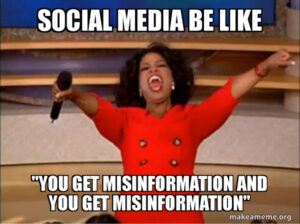Disinformation is a Centuries-Old Phenomenon
The conversation about “disinformation” has reached a fever pitch, and for good reason. By all accounts, we’ve seen an uptick in instances all across the internet in every country in the world. Disinformation tactics have grown bolder and more varied as technology has advanced, inadvertently developing new and better ways to create and disseminate it.
But “disinformation” is nothing new.
First Inklings of Disinformation
By our best account, the first recorded instance of an intentional disinformation campaign was the Arthashastra, a Sanskrit text written by Kautilya Chanakya, Prime Minister to King Chandragupta Maurya. The Arthashastra was effectively a political treatise instructing the king to forego ethical considerations in service of his rule, including encouraging so-called “Concealed Wars”, wherein Chandaguptra could sow discord and encourage the enemy to attack itself by spreading disinformation.
The Arthashastra was written in roughly 300 BC.

https://www.worldhistory.org/Arthashastra/
What History Teaches Us About Disinformation
Numerous other examples have existed throughout history, many of which are well-documented in the book A Firehose of Falsehood (which I will be reviewing at length in an upcoming video on my YouTube channel, so be sure to follow there). That history can be very informative.
Though disinformation has started to take on increasingly complex new forms, its fundamental tenants remain the same, and that’s a good thing. It means generations of counter-disinformation experts have already laid a lot of the groundwork for combatting it.
That groundwork is invaluable. With it, we can understand both the intent and strategy of disinformation spreaders, even if the method changes. We can understand what people are prone to fall for and how we can help inoculate against that.
How We Can Use What We’ve Learned
The prevailing takeaway from these centuries of learning to deal with and combat disinformation is simple: regulation. We already know how these tools are being used, we know where they’re being employed, we even know who’s most susceptible to their use. So, we need to target their roots.

https://images.app.goo.gl/P5ajiv3g4MxUoAf48
And that takes an informed and motivated body politic. That may seem like a daunting task, given how slowly the US government moves on anything related to technology, but we’re starting to see frameworks come into law around the world. The EU currently has the most comprehensive policy framework (as I’ve written about before), and we can crib a lot of the good from that and build off it to make it even better. We have thousands of experts working around the clock to determine just what we need to be effective in this campaign, and they’ve been very open and willing to engage with governmental bodies. All we need to do is get those bodies to listen.
As things stand, that means encouraging information scientists, communications experts, and experts in technology regulation to run for office and voting for them when they do. In the meantime, we can call our representatives (use this handy tool to find their information and call in) and encourage them to introduce and vote on measures to curtail disinformation here in the US.